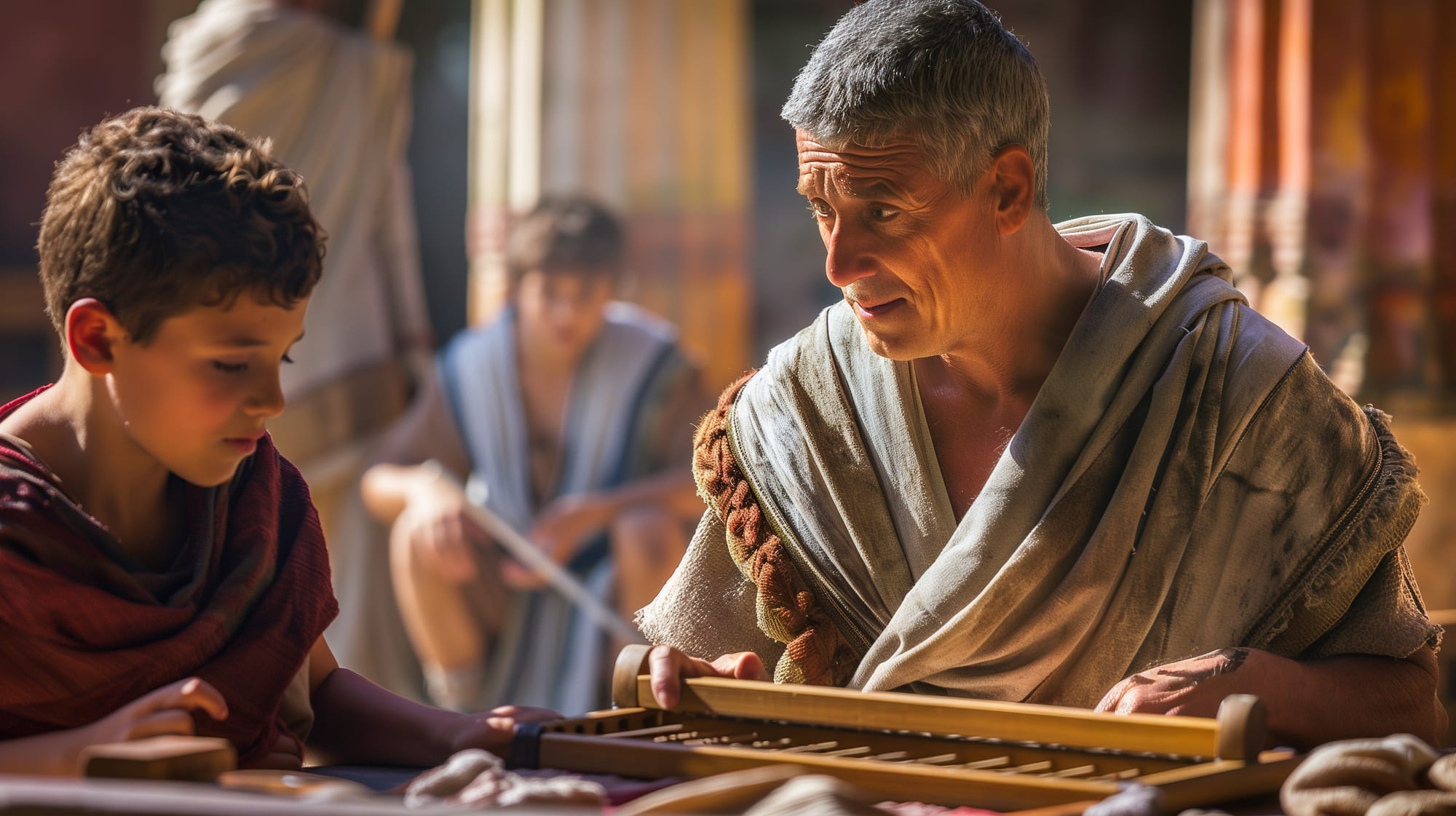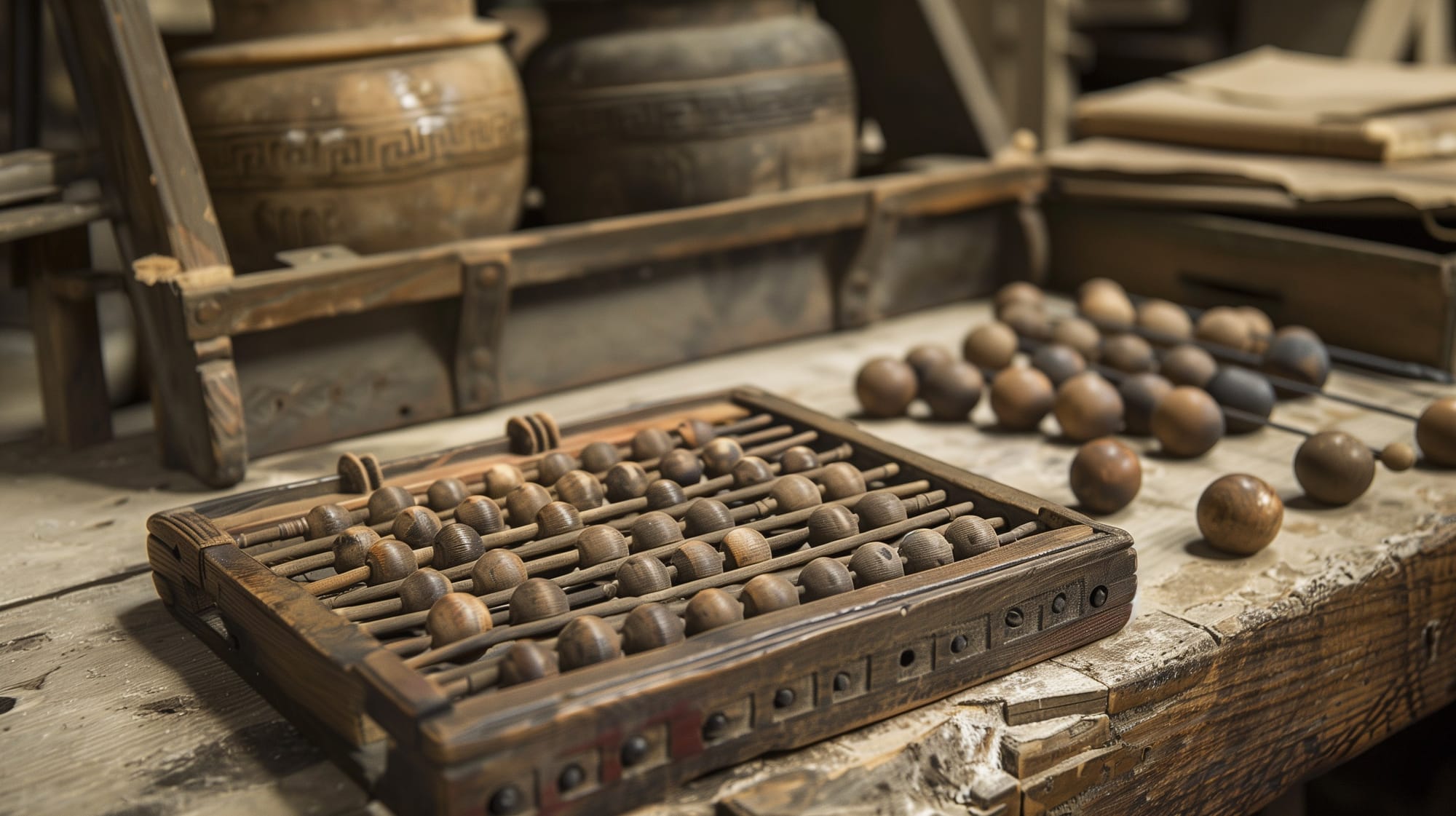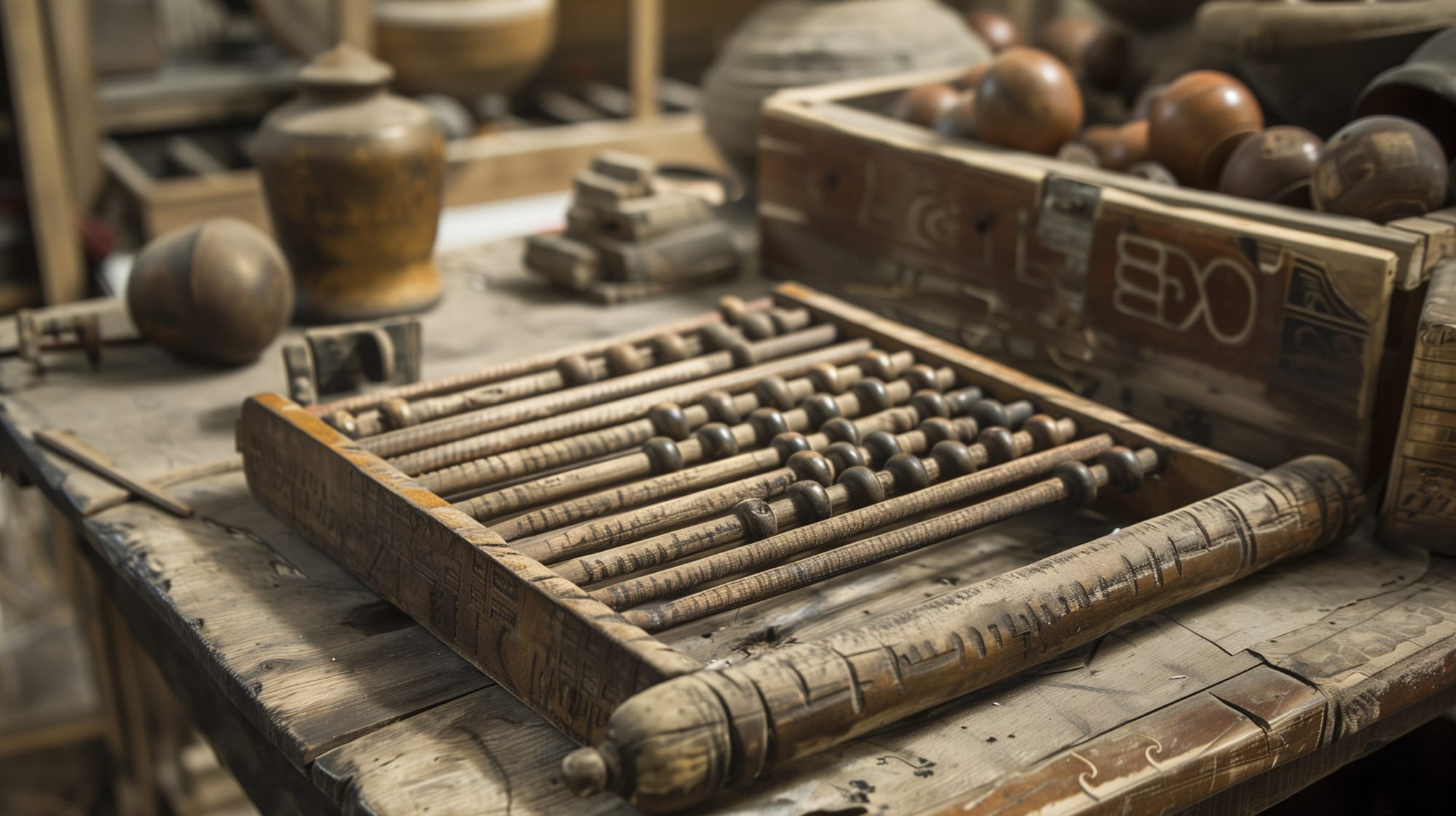How did the Ancient Romans Calculate?
The ancient Romans were doing simple calculations and were using mathematics according to their profession.

The ancient Romans had a simple approach to mathematics and calculation, despite the cumbersome nature of Roman numerals. They developed practical methods and tools to perform arithmetic, which were essential for trade, engineering, and daily life.
Calculations were essential in the Roman Empire not only for constructing buildings but also for water management, accounting, and daily tasks. The Romans used a counting board called the abacus, derived from Greek, which also referred to a table or board. Initially, calculations were done with small round pebbles called calculi. The oldest known Greek abacus, a marble tablet from around 300 BC, was found on Salamis Island. From the Roman period, five abacuses are known, including small bronze versions. For an exhibition at the Aquincum Museum, a bronze replica was made based on a piece held in Paris.

Tools for Calculation
Counting Boards and Abaci
The most common tools for calculation were counting boards and abaci. These devices allowed users to perform arithmetic operations using pebbles or beads to represent numbers.
Roman counting boards were rectangular, featuring eight short grooves in the upper part and nine long grooves in the lower part. Some abacuses, such as those described from Augsburg and Rome, had three short notches instead of the ninth groove on the right edge. Numerical values were indicated between the upper and lower grooves. From left to right, the first seven signs and their Arabic equivalents are:
| I = 1 (unus) | L = 50 (quinquaginta) | M = 1,000 (mille) | IXI = 1,000,000 (decies centena milia) |
| V = 5 (quinque) | C = 100 (centum) | ((I)) = 10,000 (decem milia) | |
| X = 10 (decem) | D = 500 (quingenti) | (((I))) = 100,000 (centum milia) |
Here is an entire Roman Numeral table:
| 1 I | 14 XIV | 27 XXVII | 150 CL |
| 2 II | 15 XV | 28 XXVIII | 200 CC |
| 3 III | 16 XVI | 29 XXIX | 300 CCC |
| 4 IV | 17 XVII | 30 XXX | 400 CD |
| 5 V | 18 XVIII | 31 XXXI | 500 D |
| 6 VI | 19 XIX | 40 XL | 600 DC |
| 7 VII | 20 XX | 50 L | 700 DCC |
| 8 VIII | 21 XXI | 60 LX | 800 DCCC |
| 9 IX | 22 XXII | 70 LXX | 900 CM |
| 10 X | 23 XXIII | 80 LXXX | 1000 M |
| 11 XI | 24 XXIV | 90 XC | 1600 MDC |
| 12 XII | 25 XXV | 100 C | 1700 MDCC |
| 13 XIII | 26 XXVI | 101 CI | 1900 MCM |
The normal method of calculation in ancient Rome, as in Greece, was by moving counters on a smooth table. With time, it took the form of a special board, the abacus. Originally pebbles were used. In Latin, calx is the limestone. The suffix ‘-ulus’ is a diminutive one, so ‘calculus’ is a small limestone, a pebble.
With time, other materials were used as counters, but ‘calculare’ stuck to signify ‘performing arithmetical operations’, even when they were no longer done with pebbles.
Roman abacuses could represent numbers up to 9,999,999 and fractions in the last two grooves. Bronze beads were used in the grooves to signify numerals from 1 to 9. Each lower groove had four beads, each worth 1, while each upper groove had one bead, worth 5. The eighth lower groove contained five beads, each valued at 1/12, and the eighth upper groove had one bead worth 6/12. The last groove on the right had four beads representing fractions: 1/24, 1/48, and two beads each worth 1/36. These fractional beads combined to represent larger fractions.

Roman Numerals
Roman numerals themselves were used for recording and communication rather than complex calculations. The system, while straightforward for writing numbers, posed challenges for performing arithmetic operations.
Roman numerals use distinct symbols for each power of ten and lack a zero symbol, unlike the place value system of Arabic numerals, which uses zeros to indicate different powers of ten for the same digit.
The ancient Greeks understood the concept of zero in the context of "We have no marbles", but they didn't consider it a number. Aristotle dismissed zero because division by zero didn't yield a tangible result. The Romans avoided using their numerals for arithmetic, thereby eliminating the need for a zero symbol to indicate an empty column. Instead, they performed addition and subtraction on an abacus or counting frame. Around 1,500 years ago in India, a symbol began to represent an empty column on an abacus. Initially, it was a dot, which later evolved into the '0' we use today.

Educational Practices
Early Education
Practical calculation was integral to Roman life from an early age, making knowledge of their methods essential to understanding their daily routines. Despite the limitations of Roman numerals compared to Arabic numerals, their notation system was more adaptable for written calculations than typically assumed. Romans relied heavily on their hands and the abacus for computations. Although handling duodecimal fractions was a fundamental skill for Romans with basic mathematical training, problems involving fractions are omitted here for simplicity.
Roman children learned basic arithmetic at home, often using their fingers or simple counting tools. As they grew older, they might receive more formal education in arithmetic, especially if their future profession required it.
Horace, the poet, favors us with a brief glimpse into a schoolroom where the subject of the drill, as it happens, not whole numbers, but the duodecimal fractions mentioned just above:
“Let Albinus' son tell us: "If one-twelfth (uncia) is taken from five-twelfths (quincunx), what is left?"
You could have said, "One-third (triens)."
"Good, you will be able to preserve your estate; add a twelfth; what have you?"
"One-half (semis)."
Teaching of mathematics
To gain a full understanding of Roman mathematical tables, we turn to the fifth-century work of Christian writer Victorius of Aquitania. His treatise, Calculus, includes detailed tables demonstrating multiplication, addition, subtraction, as well as squares of whole and mixed numbers, and the relations of duodecimal fractions.
These complex tables were likely for reference and beyond the skills of average users. However, it is reasonable to assume that educated Romans had access to simpler versions of these tables to aid in their calculations, whether written on their fingers, or using an abacus.
Roman numerals, while more practical for recording than they might first appear, are mainly advantageous for their clarity, compactness, and ease of reading, especially in large sums. Their simple form has kept them popular for inscriptions on monuments.

However, for computation, they are inferior to Arabic numerals. The latter's use of zero allows each numeral to derive part of its value from its position, making it significantly more efficient for arithmetic operations. This positional value principle is fundamental and shared with the abacus, which helps illustrate the concept visually in teaching.
The Roman educational system was similar to the Greek's but with different emphases. Roman children were taught at home until around age twelve, learning letters, music, and basic arithmetic using an abacus and fingers. At twelve, boys advanced to a school of literature to study grammar, logic, rhetoric, and dialectics.
Most Romans learned little more mathematics unless required by their occupation, although some attended lessons from a specialized mathematics master. Practicality was key, as seen in Quintilian's advocacy for studying geometry for mental training and its practical applications in politics and land measurement. Sophists focused more on oratory and current affairs than on scientific advancements.
During this period, various texts recommended educational courses for different social classes. Vitruvius advised architects to study geometry, optics, arithmetic, astronomy, law, medicine, music, philosophy, and history. Galen, in the 2nd century, suggested prospective doctors learn medicine, rhetoric, music, geometry, arithmetic, dialectics, astronomy, literature, and law.
Figures like Varro and Seneca also emphasized the importance of geometry and arithmetic. Boethius translated Greek texts into Latin, though his own mathematical works were of poor quality. Despite a general disdain for mathematics, it was taught when necessary, with preference given to professions involving logic, rhetoric, and oratory over those requiring mathematical skills.









About the Roman Empire Times
See all the latest news for the Roman Empire, ancient Roman historical facts, anecdotes from Roman Times and stories from the Empire at romanempiretimes.com. Contact our newsroom to report an update or send your story, photos and videos. Follow RET on Google News, Flipboard and subscribe here to our daily email.
Follow the Roman Empire Times on social media: